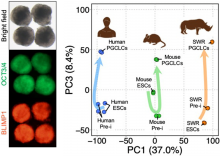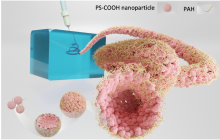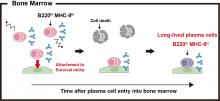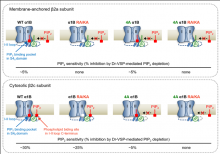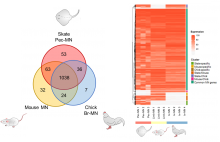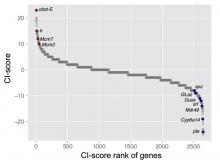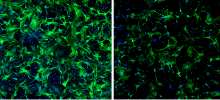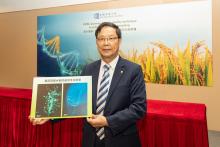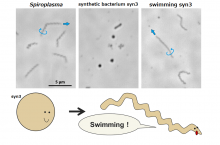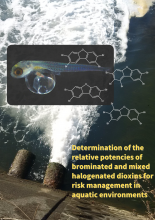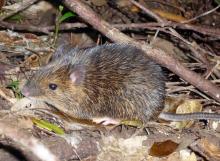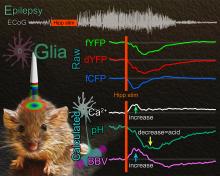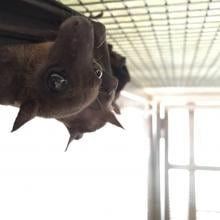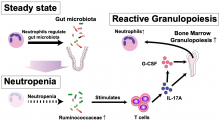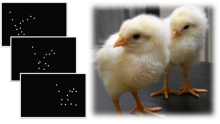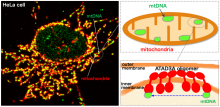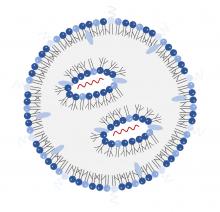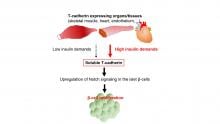Biology
News
19 Dec 2022
Researchers from Osaka University have developed a culture system using pluripotent cells from southern and northern white rhinos, which was refined to produce primordial germ cell-like cells (PGCLCs). These cells are the equivalent of primordial germ cells, the origin of eggs and sperm. The study marks an important first step in the potential production of northern white rhino gametes, which could be used in breeding programs, and is the first to induce PGCLCs in a wild animal.
15 Dec 2022
A research team led by the University of Hong Kong (HKU) and Lawrence Berkeley National Laboratory has invented an all-water robotic system that resolves the constraints of bio-inspired robots through revolutionary scientific advances.
15 Dec 2022
Understanding how bats tolerate viral infections, Material separates water from...water, The virtual sense of touch polished to next level and COVID-19 negatively impacted early-careers and female researchers. Read all in the December's Editor's Choice.
14 Dec 2022
Using cryogenic electron microscopy, a research team from the Research Center for Artificial Photosynthesis (ReCAP) at Osaka Metropolitan University has revealed, for the first time, the structures and binding environments of pigments bound to a protein called a photosynthetic antenna of the marine green macroalga Codium fragile. The team’s results extend our knowledge about the molecular mechanism by which blue-green light—the only light available in deep seawater—is efficiently utilized for photosynthesis.
14 Dec 2022
Researchers led by Osaka University generated a time-stamping method to trace the development and survival of plasma cells in the bone marrow and spleen. Using a mouse model in which plasma cells were fluorescently labeled in an inducible manner, they found that plasma cells were continuously replenished by new cells, a small portion of which differentiated into long-lived plasma cells (LLPCs). These findings may aid in the development of new vaccines that efficiently induce LLPCs.
14 Dec 2022
- DGIST Professor Suh Byung-chang's research team identified the regulation mechanism of calcium channels, which are important for signal transmission between nerve cells
- A new clue to the development of substances for treating mental and neurological diseases
14 Dec 2022
- Discovery of potential treatment target networks for gene dysregulation uniquely found in patients with autism spectrum disorder
- Published in ‘Molecular Psychiatry,’ an international journal of molecular psychiatry
14 Dec 2022
- Identifying the entire genome of the primitive fish, little skate, and proposing the molecular mechanism for the evolution of movement
- Joint Research of DGIST · Seoul National University · New York University Medical School... Published in SCI-level journals
12 Dec 2022
Revelations about the mechanisms of two key proteins which maintain the asymmetric distribution of cholesterol within the cell membrane could help understand and treat diseases linked to its imbalance
11 Dec 2022
Scientists investigate how genes in some insects can influence one another to change their expression depending on environmental conditions.
09 Dec 2022
Silencing the gene, called WWP2, in patients in the early stages of cardiomyopathy could delay progression to heart failure by controlling immune cell infiltration and activation, and halting the formation of excessive scar tissue, preclinical data suggest.
08 Dec 2022
Giants in History: Chinese-American virologist and molecular biologist Flossie Wong-Staal (27 August 1946 – 8 July 2020) was the first scientist to clone HIV and determine the function of its genes.
07 Dec 2022
First-in-the-world high-resolution imaging allows scientists to study the dengue protein in greater detail to yield valuable insights.
06 Dec 2022
World's first research into relationship between rich-in-biodiversity garden greenery and health/well-being launched by University of Tokyo and Sekisui House Ltd.
01 Dec 2022
Research led by Hong Kong Baptist University (HKBU) involving the use of a pioneering female sterility technique has led to a breakthrough in the production of hybrid rice seeds. Compared to the commonly used “three-line” male sterility technique in hybrid rice seeds production, the novel approach enhances the efficiency of hybrid rice production by eliminating rice seeds that have been produced due to the self-pollination of the “restorer line”. The novel technique enables fully automatic harvesting of hybrid seeds by machines, which can substantially reduce harvesting costs.
30 Nov 2022
Osaka Metropolitan University researchers introduced seven proteins, thought to let bacteria swim by switching the direction that their helical bodies spiral, into a strain of synthetic bacterium with minimal genetic information. As a result, they confirmed that the synthetic bacterium named syn3, which is normally spherical, formed a helix that could swim by spiraling. Further investigation revealed that only two of these newly added proteins were required to make syn3 capable of minimal swimming. This swimming synthetic bacterium can be said to be the smallest mobile lifeform genetically, as it contains the fewest number of genes.
30 Nov 2022
Some mixed halogenated dioxins are more toxic than TCDD
28 Nov 2022
The Sox9 gene is upregulated in the absence of sex-determining Y chromosome and Sry gene in Amami spiny rat.
25 Nov 2022
Researchers at Tohoku University have shown that astrocytes in the mouse brain exhibit an acid response with intensified epileptic seizures. The astrocytes’ acid response could lead to the amplification of excitatory neuronal signals and be the underlying drive for generating plasticity for epileptogenesis.
25 Nov 2022
A research group at the Osaka Metropolitan University Graduate School of Science has revealed a new system that allows them to control the behavior of the nematode worm Caenorhabditis elegans, using two different animal opsins, a type of light-sensitive protein. The first opsin was expressed in the worms’ sensory cells responsible for triggering avoidance behavior, making the worms move. This opsin was found to be approximately 7,000 times more sensitive to white light than the commonly used optogenetic protein channelrhodopsin-2. Likewise, a UV-sensitive opsin was expressed in the worms’ motor neurons, causing the worms to stop when exposed to UV light and start moving again when exposed to green light. Both opsins tested can be switched on and off repeatedly without breaking down, making them robust tools for future research, including the field of drug discovery.
24 Nov 2022
Understanding how bats tolerate viral infections without developing symptoms may lead to better ways of combatting human disease.
22 Nov 2022
The research team investigated the role of D-amino acids in severe viral infection. Mouse models of influenza A and COVID-19 infection and patients with severe COVID-19 demonstrated reduced D-amino acid levels in the blood. Supplementation with D-alanine mitigated body weight reduction in IAV model mice and improved survival in COVID-19 model mice. D-amino acids may represent potential biomarkers and therapeutic agents for the treatment of severe viral infection.
21 Nov 2022
Intestinal bacteria composition is crucial to driving the recovery of neutrophils counts in the blood of mice following treatments such as stem cell transplants or chemotherapy.
18 Nov 2022
Exploring virtual human-agent relationships, A fly protein gives clue for human cancers, Rare earth elements formed in neutron star mergers 💥, One-stop process for hydrogen production. Read all in the November's Editor's Choice plus Upcoming event K4DM KNOWLEDGE MARKETPLACE – Bangkok 2022: Exchanging Ideas for a Democratic Myanmar.
18 Nov 2022
Disturbed transmission via nicotinic acetylcholine receptors in chick fetuses impairs the hatchlings’ preference for animate objects—similar to what is seen in autism spectrum disorder in humans.
17 Nov 2022
Researchers led by Osaka University have shown that a molecule known as ATAD3A is essential for the movement of genetic material inside cellular substructures called mitochondria. Appropriate distribution of this DNA, organized into “nucleoid” structures, is key for the generation of energy by the “respiratory chain” protein complex. This study opens up opportunities for developing new methods to alter nucleoid movement and affect mitochondrial function, thereby providing potential therapies against mitochondrial diseases.

14 Nov 2022
In a study recently published in the Journal of Extracellular Vesicles, researchers from Kanazawa University use high-speed microscopy to capture the dynamics of nanosized sacs released from cells.
10 Nov 2022
A novel branched lipid that has a high stability in storage and a high efficiency in the delivery of mRNA to cells has been developed.

08 Nov 2022
In a study recently published in the journal Nature Biomedical Engineering, researchers from Kanazawa University use a method called “lasso-grafting” to design therapeutics with enhanced longevity and brain penetration.
07 Nov 2022
Researchers led by Osaka University show that a molecule called T-cadherin can be secreted in a soluble form. Soluble T-cadherin interacts with pancreatic insulin-producing β cells via the Notch signaling pathway to promote their proliferation and increase the production of insulin. Recombinant T-cadherin stimulated Notch signaling in isolated mouse pancreatic islets, which contain β cells, indicating that T-cadherin may have therapeutic potential for diabetes.
Events
Sorry, nothing coming up for this discipline
Researchers
Sorry, nothing coming up for this discipline
- « first
- ‹ previous
- 1
- 2
- 3
Giants in history
Sorry, nothing coming up for this discipline
- « first
- ‹ previous
- 1
- 2
- 3


